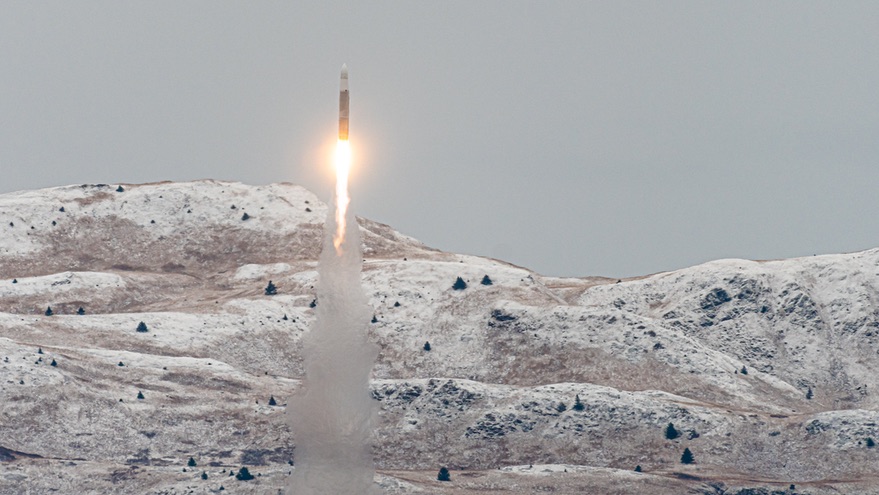WASHINGTON — Astra will introduce an upgraded version of its small launch vehicle on its next flight later this month intended to increase the vehicle’s payload capacity.
In an Aug. 12 earning call, Chris Kemp, chief executive of Astra, said the launch, scheduled for a window that opens Aug. 27 from Pacific Spaceport Complex – Alaska on Kodiak Island, will be the first of the Rocket 3.3 version of the rocket.
Those upgrades include stretching the tanks in the rocket’s first stage to increase the amount of propellant they can hold, reducing the mass of the upper stage, adding sensors to provide data about the vehicle’s flight environment, and consolidating more than a dozen unspecified components on the upper stage into a single unit.
“Making any changes to a complex system like a rocket always involves risk,” he said. “We appreciate this, but also believe that maximizing our learning requires us to make advances and take appropriate technical risks.”
That particular rocket, known by the internal designation LV0006, has been shipped to Kodiak and is scheduled to arrive Aug. 16, where an Astra team will perform final launch preparations, including a wet dress rehearsal where the rocket is fueled for a simulated countdown. The launch period for the mission extends through Sept. 11, although the company has not disclosed how many hours each day the launch window will be open.
The launch is the first of two under a Space Force award announced Aug. 5, arranged using the other transaction authority of the Defense Innovation Unit. At the time, the company said only that a “test payload” would be on the launch, designated STP-27AD1 by the Space Force.
Kemp said the payload will not be an operational satellite but instead equipment to measure the launch environment of the rocket. “It’s really there to test the loads and environments so that, when we do our next launch with the Space Force, they’ll be able to predict the impact on their satellite.”
The launch will be the first since the company’s Rocket 3.2 vehicle fell just short of reaching orbit on a launch from Kodiak in December 2020. Despite failing to reach orbit, the company believes that launch demonstrated “orbital launch capability” for the vehicle.
“An identically performing launch from Cape Canaveral, for example, would have reached orbit at our target orbital velocity and target altitude,” he said, because of boost that launches get from the Earth’s rotation when going to the east. “Launching to polar orbits, like from Kodiak, Alaska, requires more performance than low-inclination orbits.”
The upcoming launch is the first of three Astra expects to conduct this year. The next two rockets, LV0007 and LV0008, are under construction at the company’s Alameda, California, factory. Kemp said the dates for those future launches aren’t “locked in” yet but that the company hopes to demonstrate a monthly launch cadence before the end of the year. He added the company is applying for a launch operator’s license from the Federal Aviation Administration’s Office of Commercial Space Transportation that would cover multiple launches of the same type of mission, rather that licenses for individual launches.
Kemp and other Astra executives spoke in the company’s first earnings call since it completed its merger with a special-purpose acquisition company (SPAC), Holicity, and started trading on the Nasdaq July 1. In the company’s second quarter, which ended June 30, Astra reported no revenue, a net loss of $31.3 million and adjusted earnings before interest, taxes, depreciation, and amortization (EBITDA) of –$21.4 million.
The company is projecting adjusted EBITDA of –$32 million to –$35 million in its third quarter. Kelyn Brannon, Astra’s chief financial officer, said expenses will grow in the third quarter as the company accelerates operations, including development of its launch vehicles and “broader investment in our product roadmap.” She said there was reduced capital expenditures than previously planned because of a delayed start of the expansion of its Alameda factory. Those expenditures will shift into 2022 and beyond.
Astra shares, which rose in the first few days of public trading in early July only to fall over the next month, have partially bounced back since then. Astra shares closed down 1.8% in trading Aug. 13, at $11.22 per share.
